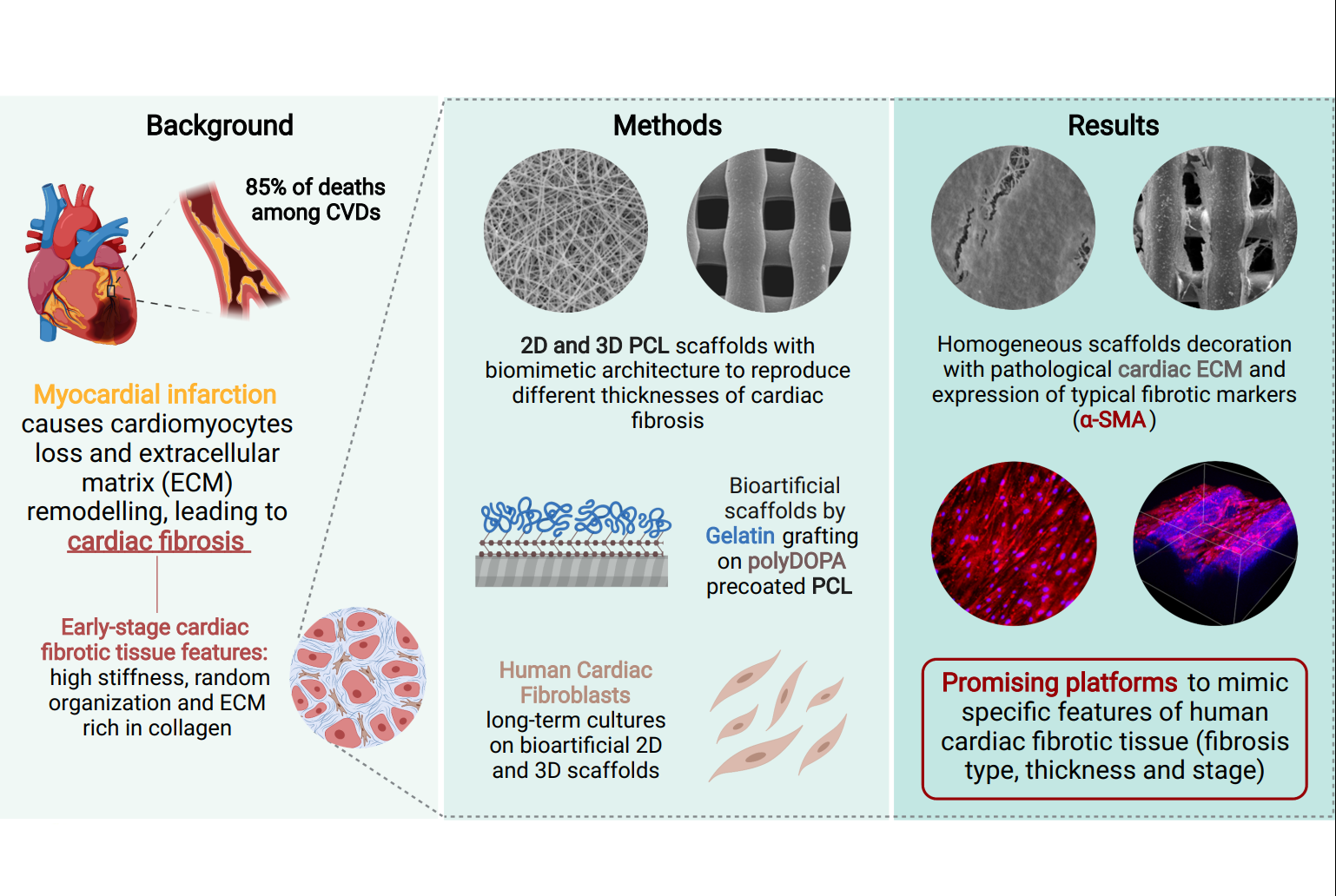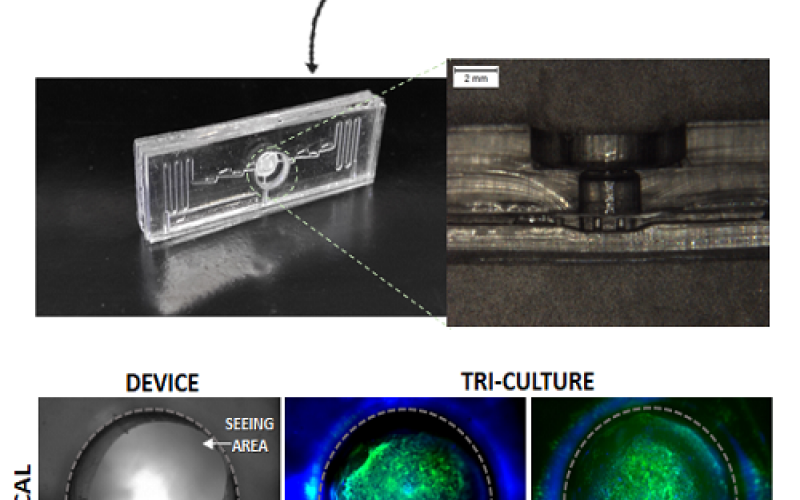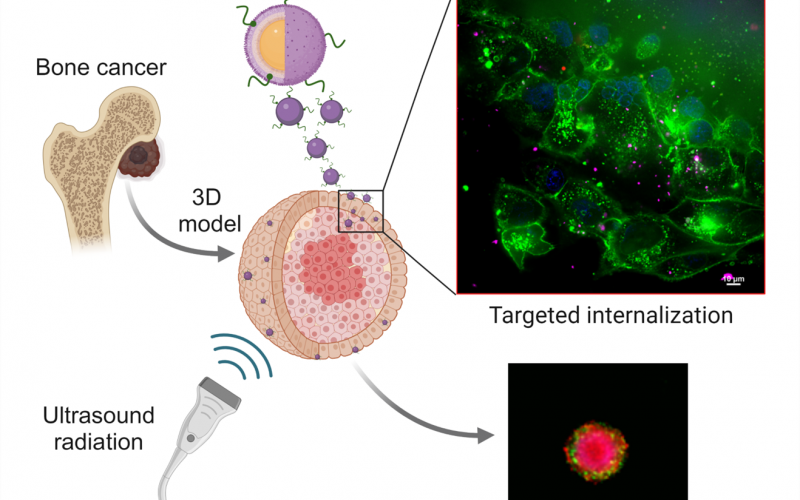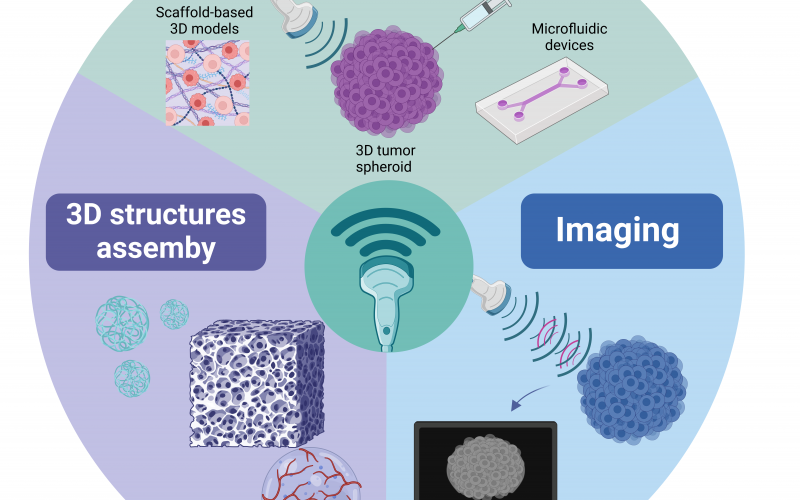- IT
- EN
- Centro Interuniversitario per la Promozione dei Principi delle 3R nella Didattica e nella Ricerca
Biomimetic design of bioartificial scaffolds for the in vitro modelling of human cardiac fibrosis

In vitro models of pathological cardiac tissue have attracted interest as predictive platforms for preclinical validation of therapies. However, models reproducing specific pathological features, such as cardiac fibrosis size (i.e., thickness and width) and stage of development are missing. This research was aimed at engineering 2D and 3D models of early-stage postinfarct fibrotic tissue (i.e., characterized by non-aligned tissue organization) on bioartificial scaffolds with biomimetic composition, design, and surface stiffness. 2D scaffolds with random nanofibrous structure and 3D scaffolds with 150 µm square-meshed architecture were fabricated from polycaprolactone, surface-grafted with gelatin by mussel-inspired approach and coated with cardiac extracellular matrix (ECM) by 3 weeks culture of human cardiac fibroblasts. The versatility of the approach was demonstrated by culturing ventricular or atrial cardiac fibroblasts on scaffolds, thus suggesting the possibility to use the same scaffold platforms to model both ventricular and atrial cardiac fibrosis.




